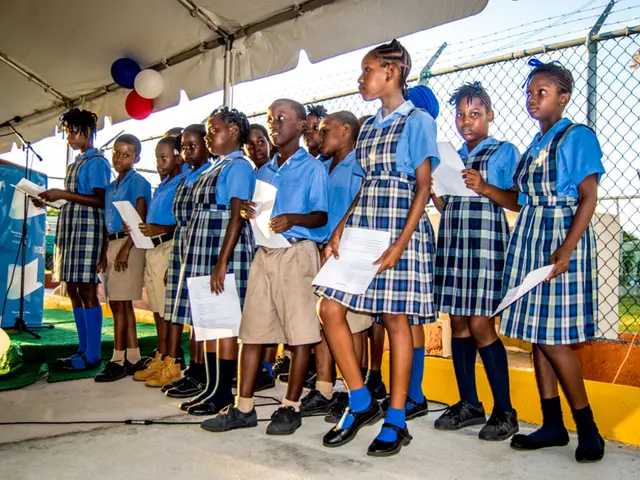A Splash in Progress: Berlin Elementary School Students' Swimming Abilities On the Rise
A higher number of elementary school students in Berlin are now sporting swim badges - A noteworthy rise in the number of Berlin residents possessing swimming credentials
Hey there! Let's dive right into the remarkable enhancements in swimming skills amongst Berlin's elementary school students. Recent stats show a significant improvement, with fewer third-graders lacking swimming badges compared to previous years.
Affirmatively, the 2023/2024 school season witnessed around 24% of third-graders without a bronze swimming badge or a seahorse badge (beginner's certificate), as opposed to the higher numbers, approximately 25% and 36%, in earlier years.
It's important to note, however, that students without a badge were deemed "non-swimmers" by schools, even if they could actually swim or had attempted to earn a badge at a pool. These numbers, then, carry limited significance. Overall, last school year, around 28,585 third-grade students partook in swimming lessons during school hours.
Tallying up the numbers, big disparities emerge between the districts with a disproportionate share of students without badges found in Lichtenberg (34.8%), Neukölln (34.7%), Spandau (30.6%), and Mitte (29.9%). Comparatively, districts like Steglitz-Zehlendorf (11.0%), Charlottenburg-Wilmersdorf (15.8%), and Pankow (18.7%) showed better results. In some areas during the 2020/2021 school year, the rates even surpassed 50%.
In response to queries from the Left party, the Senate clarified that factors like migration background, economic, and social status were not taken into account in this context. Simultaneously, the Senate emphasized that free intensive swimming courses were provided during holidays for students without badges, with the intention of boosting their swimming abilities and obtaining a swimming badge.
To shed light on the larger picture, let's delve into some key factors impacting swimming proficiency:
- Access to Facilities: Some districts have a wealth of swimming pools and facilities, boosting the frequency and quality of swimming lessons. Meanwhile, areas with scarce facilities may confront challenges in offering consistent instruction.
- Funding and Resources: Districts with more financial backing can invest in expert instructors, equipment, and lower-cost or free swimming programs, enhancing the outcome.
- Cultural and Socioeconomic Factors: Cultural attitudes towards swimming and socioeconomic status can influence participation rates. Families from lower-income backgrounds may confront barriers in accessing swimming lessons.
On the flip side, free intensive courses can significantly increase participation by making swimming more accessible for all students, regardless of income. Additionally, such courses accelerate skill acquisition, offering focused instruction over a shorter period. Their structured nature and engaging instructors can inspire motivation and enjoyment, encouraging students to persevere and progress in their swimming skills. Lastly, these programs foster a sense of community, prompting parental involvement and support for swimming activities.
Challenges persist in addressing infrastructure gaps and securing funding and support for these programs to ensure their longevity. Collaborating with local community centers and private pools can help alleviate infrastructure issues. Providing training for instructors ensures they are well-equipped to teach effectively. Maintaining long-term funding and support is crucial for the sustainability and impact of these programs. C'mon, push through the currents and keep swimming towards success! party! left! Politics! Cooperation! Accessibility! Financing! Socioeconomic factors! Community engagement! Infrastructure development! Free swimming courses! Intensive training! Program impact! Long-term funding!
- To ensure equal opportunities for vocational training in swimming, districts with infrastructure gaps might partner with local community centers and private pools for better access to facilities.
- In line with the Senate's commitment to boost education-and-self-development, implementing long-term funding for intensive training and free swimming courses can create a vibrant learning environment for students, fostering community engagement and promoting the impact of such programs.








